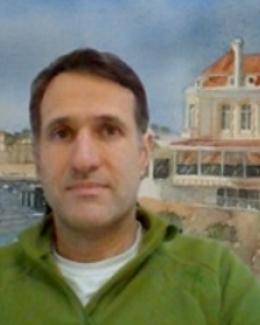Abstract
The connection between electronic and structural degrees of freedom—whether successive, coincident, or causal—suffuses the study of phase transitions. The Shastry–Sutherland model of a planar network of coupled spin dimers (1) and its physical realization in SrCu2(BO3)2 (SCBO) provide a fundamental quantum mechanical test of this connection at the onset of antiferromagnetic order. We summarize in Fig. 1 the current understanding of SCBO’s phase diagram for T < 200 K and an intermediate pressure range of 3.5–6 GPa (2⇓–4). At pressures below ∼4–5 GPa, SCBO has a tetragonal structure that hosts several low-temperature magnetic phases. Above this pressure, monoclinic distortions reduce the symmetry of the lattice. In ref. 2, we performed full structural refinements of X-ray and neutron scattering measurements to identify a change in space group at 5.5 GPa as a function of temperature (red circles in Fig. 1). This structural change coincides with the onset of antiferromagnetic ordering as a function of temperature, and we argue that this is not a coincidence but instead represents a cooperative effect between distortions of the lattice, the dimers tilting out of the plane, and the emergence of long-range magnetic order. In his comment on our work, Zayed (5) proposes an alternative scenario, in which the antiferromagnetic ordering onsets at lower pressure, within the tetragonal phase, and is then stabilized by the structural distortion associated with the monoclinic phase. He further speculates that this earlier onset may be associated with the dome in the phase boundary reported in ref. 4 (dark red region, Fig. 1).



